Mercedes: Is bigger always best?
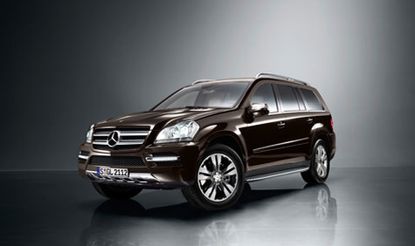
There's something rather perverse about the modern motoring brand and its desire to cover all bases. While global focus seems to be pulling up sharp in favour of downsizing, there's a marked resistance amongst certain consumers to make even the smallest sacrifice to their existing style of life. The end result is somewhat incongruous, as ultra-light conceptual designs jostle for attention with production cars that, on the surface, demonstrate little evidence of a coming paradigm shift.
Pluralism is still the name of the game in the modern auto industry. With scarcely anyone immune to the global downturn, the steady progress towards increasingly efficient vehicles is becoming less and less defined. No volume manufacturer is disregarding the need for efficiency, but wheels turn slowly when all-new models cost billions to develop and technology has to be tried and tested for years before it can be issued to the masses.
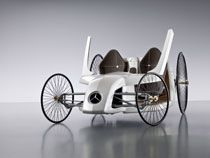
See images of Mercedes new lightweight contemporary carriage and the new hefty GL
Mercedes is a good case in point. March's news was the unveiling of the F-CELL Roadster (see the gallery above) a lightweight contemporary carriage designed by company trainee engineers, complete with skinny carriage wheels, zero creature comforts and a pace about equivalent to a swift pony and trap. The F-CELL is extreme, but the skinny wheels and skimpy accommodation is thrown into even starker relief when compared to the current Mercedes GL.
Introduced in 2005, the GL represents the very outer limits of passenger car design. Weighing in at nearly two and half tonnes, with a hefty (yet relatively clean) V6 diesel engine, the one thing the GL is defiantly not is lightweight. With seven full-sized seats, full-time four wheel drive and what enthusiasts like to call 'go-anywhere ability', the GL is pitched at those who need to haul a glider, Riva or even a polo pony or two, without having to stint on the accommodation up front. A battery of electronic aids help keep the driving experience urbane and not agricultural, while at the push of a button the vast interior can be transformed into a space capable of swallowing any amount of B&B Italia.
We sampled a recent example of the GL as a means of everyday urban transport and in central London, it was clear that no amount of ultra-light steering and far-reaching visibility can disguise this car's sheer physical size. On the plus side, heft induced caution and discouraged the excessive use of the accelerator. Nonetheless, width restrictors, parked cars and narrow roads make the urban driving experience somewhat unnerving. Such quibbles don't seem to bother the GL's loyal customer base, however, implying that familiarity breeds confidence when it comes to the 4x4 driving style.
Yet between the two extremes of GL and F-CELL lies an untapped plane of potential, an open challenge to the current generation of car designers. Throw into the mix the turn of the century fad for SUVs and the sizeable legacy this has left for product planners, and it's clear that uncertainty lies ahead. Some argue that these big cars will play a crucial role in ushering in new, efficient technologies. One thing a big car has is space, so the potential packaging issues with cramming in batteries and electric motors becomes more straightforward.
Wallpaper* Newsletter
Receive our daily digest of inspiration, escapism and design stories from around the world direct to your inbox
Lexus has vowed to only import hybrid versions of its RX model into the UK, while Porsche recently capitulated to the inevitable and inserted its very first diesel engine into a Cayenne, while the vast Cadillac Escalade is now available in hybrid form. Hybrid drivetrains are also under development by Land-Rover, Porsche and Mercedes, amongst others, so within five years the industry promises that big cars will have a clear conscience. Few outsiders know exactly what's being cooked up for the roads of 2015 and beyond, but the challenge of delivering a combination of stature and efficiency must surely be high up on every manufacturer's to do list.
April also saw the first true production hybrids enter Mercedes' product line, starting with the S400 and S600 saloons and the ML450 Hybrid [IMAGE 009], a first step on the road towards slimming down the automotive footprint of the SUV. Lightness, however, will only be attained with a corresponding reduction in size. Whether we'll ever reach the Size Zero aesthetic offered by the F-CELL concept is quite another matter.
Jonathan Bell has written for Wallpaper* magazine since 1999, covering everything from architecture and transport design to books, tech and graphic design. He is now the magazine’s Transport and Technology Editor. Jonathan has written and edited 15 books, including Concept Car Design, 21st Century House, and The New Modern House. He is also the host of Wallpaper’s first podcast.
-
 The visual feast of the Sony World Photography Awards 2024 is revealed
The visual feast of the Sony World Photography Awards 2024 is revealedThe Sony World Photography Awards 2024 winners have been revealed – we celebrate the Architecture & Design category’s visual artists
By Ellie Stathaki Published
-
 Don’t Move, Improve 2024: London’s bold, bright and boutique home renovations
Don’t Move, Improve 2024: London’s bold, bright and boutique home renovationsDon’t Move, Improve 2024 reveals its shortlist, with 16 home designs competing for the top spot, to be announced in May
By Ellie Stathaki Published
-
 Perfumer H has bottled the scent of dandelions blowing in the wind
Perfumer H has bottled the scent of dandelions blowing in the windPerfumer H has debuted a new fragrance for spring, called Dandelion. Lyn Harris tells Wallpaper* about the process of its creation
By Hannah Tindle Published
-
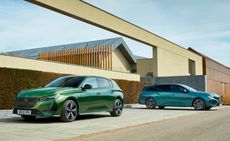 Peugeot’s sparky 308 gets hybrid power and handsome lines
Peugeot’s sparky 308 gets hybrid power and handsome linesThe Peugeot 308 proves that mass-market design needn’t be dull, blending hybrid power with sharp lines and excellent detailing
By Jonathan Bell Published
-
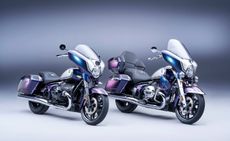 BMW Motorrad brings out the big guns for its newest cruisers
BMW Motorrad brings out the big guns for its newest cruisersBMW Motorrad R 18 Bagger and Transcontinental set the tone for high-voltage cruising with a brand collaboration with speaker specialist Marshall
By George Chapman Last updated
-
 Dacia’s new Manifesto concept is a true outdoor utility vehicle
Dacia’s new Manifesto concept is a true outdoor utility vehicleUtilitarian auto brand Dacia sets a bold new agenda with its Manifesto, a concept car pitched at the active outdoor market
By Jonathan Bell Last updated
-
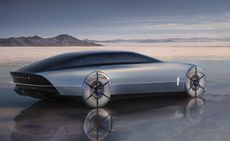 The sun sets on traditional supercars at California’s Monterey Car Week
The sun sets on traditional supercars at California’s Monterey Car WeekMonterey Car Week, the world’s most prestigious car gathering, is showcasing ever-more extravagant special editions, coachbuilt cars and all-new electric concepts. Here are seven key machines from 2022
By Rory FH Smith Last updated
-
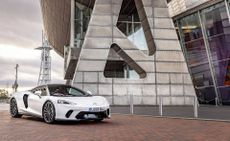 Is McLaren’s GT a sports car, a tourer, or the best of both?
Is McLaren’s GT a sports car, a tourer, or the best of both?The McLaren GT is a capable all-rounder dressed up in svelte supercar clothes. It might also be the last of its type
By Jonathan Bell Last updated
-
 Rolls-Royce puts the Phantom back on its lofty pedestal
Rolls-Royce puts the Phantom back on its lofty pedestalA mid-life refresh ensures the flagship Rolls-Royce Phantom Series II is at the top of its game, a last hurrah for traditional engines before an electrified future
By Jonathan Bell Published
-
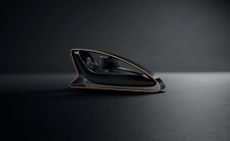 Prodrive’s new racing simulator is shaped by Callum to be front of the grid
Prodrive’s new racing simulator is shaped by Callum to be front of the gridThe racing simulator shapes up – this new design from Prodrive and Callum is honed for the high-end games room
By Jonathan Bell Last updated
-
 928 by Nardone Automotive: a restomod Porsche with Gallic verve and Italian style
928 by Nardone Automotive: a restomod Porsche with Gallic verve and Italian style928 by Nardone Automotive is a gracefully modernised version of Porsche’s endearingly different 928
By Jonathan Bell Last updated